0
Notifications Mark All Read
- Login
- Get Prime
Quants Menu
- HCF and LCM
- Number System
- Number Decimals & Fractions
- Surds and Indices
- Divisibility
- Ages
- LCM
- HCF
- Inverse
- Speed Time and Distance
- Work and Time
- Boats and Streams
- Pipes and Cisterns
- Averages
- Allegations and Mixtures
- Ratio and Proportions
- Simple & Compound Interest
- Simple Interest
- Compound Interest
- Percentages
- Profit & Loss
- Successive Discount 1
- Successive Discount 2
- AP GP HP
- Arithmetic Progressions
- Geometric Progressions
- Harmonic Progressions
- Probability
- Permutation & Combination
- Combination
- Circular Permutation
- Geometry
- Heights and Distances
- Perimeter Area and Volume
- Coordinate Geometry
- Venn Diagrams
- Set Theory
- Algebra
- Linear Equations
- Quadratic Equations
- Logarithms
- Clocks
- Calendars
- Clocks and Calendars
- Finding remainder of large powers
Algebra Formula
Introduction to Algebra Formula
Welcome to our comprehensive page of Algebra Formulas! Here, you’ll find a collection of essential algebraic formulas designed to simplify your mathematical journey. Embrace the power of algebra and unlock your problem-solving potential with our easy-to-navigate page of Algebra Formulas. Simplify your math challenges and gain confidence in tackling any algebraic problem that comes your way!
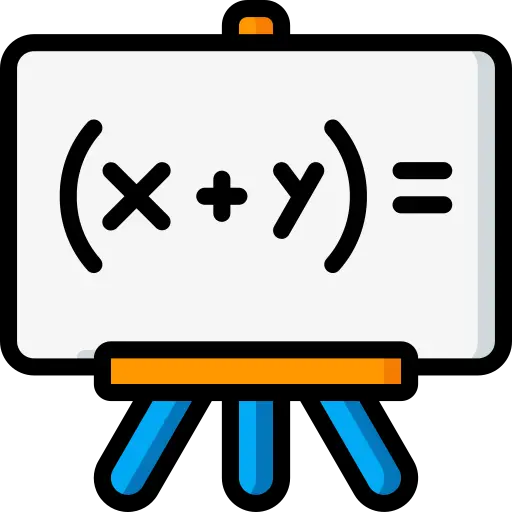
Uses of Algebra :
Algebra formulas find diverse and invaluable uses across multiple fields, making them essential tools for problem-solving and analysis. In engineering, these formulas aid in designing structures and analyzing complex systems. In finance, they facilitate budgeting, investment calculations, and risk assessments. Algebraic expressions are vital in computer science for coding and modeling algorithms.

Formulas Required for Solving Coordinate Geometry Questions:
- Distance between two points A(x1, y1) and B(x2, y2)
AB = \sqrt{(x_{2}- x_{1})^2 + (y_{2}- y_{1})^2}
- Slope of line when two points are given (x1, y1) and (x2, y2)
m = \frac{(y_{1}- y_{2})}{(x_{1}- x_{2})}
- Slope of line when linear equation is given ax + by = c => – \frac{a}{b}
- Midpoint =\frac{x_{1} + x_{2}}{2},\frac{y_{1} + y_{2}}{2}
- The co-ordinates of a point R(x,y) that divides a line segment joining two points A(x1, y1) and B(x2, y2) internally in the ratio m:n is given by
x = \frac{ m x_{2} + nx_{1}}{m + n}
y = \frac{my_{2} + ny_{1} }{m + n}
- The co-ordinates of a point R(x,y) that divides a line segment joining two points A(x1, y1) and B(x2, y2) externally in the ratio m:n is given by
x =\frac{ m x_{2} – nx_{1}}{m – n}
y = \frac{my_{2} – ny_{1} }{m – n}
- Centroid of a triangle with its vertices (x1,y1), (x2,y2), (x3,y3)
C = \frac{x_{1}+ x_{2} + x_{3}}{3}, \frac{y_{1}+ y_{2} + y_{3}}{3}
- Area of a Triangle with its vertices A(x1,y1), B(x2,y2), C(x3,y3)
A =\frac{1}{2} ×[ (x_{1}(y_{2}-y_{3}) + (x_{2}(y_{3}-y_{1}) ) + (x_{3}(y_{1}-y_{2}) )]
- Division of a line segment by a point
If a point p(x, y) divides the join of A(x1, y1) and B(x2, y2), in the ratio m: n, then
x= \frac{ m x_{2} + nx_{1}}{m + n} and y= \frac{my_{2} + ny_{1} }{m + n}
- The equation of a line in slope intercept form is Y= mx+ c, where m is its slope.
The equation of a line which has gradient m and which passes through the point (x1, y1) is =
y – y1 = m(x – x1).
Algebraic Expressions:-
Here we have listed some of the most important Formulas For Algebra:-
- a2 – b2 = (a – b)(a + b)
- (a+b)2 = a2 + 2ab + b2
- a2 + b2 = (a – b)2 + 2ab
- (a – b)2 = a2 – 2ab + b2
- (a + b + c)2 = a2 + b2 + c2 + 2ab + 2ac + 2bc
- (a – b – c)2 = a2 + b2 + c2 – 2ab – 2ac + 2bc
- (a + b)3 = a3 + 3a2b + 3ab2 + b3 , which can be also denoted as – (a + b)3 = a3 + b3 + 3ab(a + b)
- (a – b)3 = a3 – 3a2b + 3ab2 – b3
- a3 – b3 = (a – b)(a2 + ab + b2)
- a3 + b3 = (a + b)(a2 – ab + b2)
- (a + b)4 = a4 + 4a3b + 6a2b2 + 4ab3 + b4)
- (a – b)4 = a4 – 4a3b + 6a2b2 – 4ab3 + b4)
- a4 – b4 = (a – b)(a + b)(a2 + b2)
- a5 – b5 = (a – b)(a4 + a3b + a2b2 + ab3 + b4)
Properties and Formulas For Algebra
1. Commutative Property of Addition
The sum of the expression does not changes if the order of the elements are changed. The elements can be expressions or numbers.
a + b = b + a
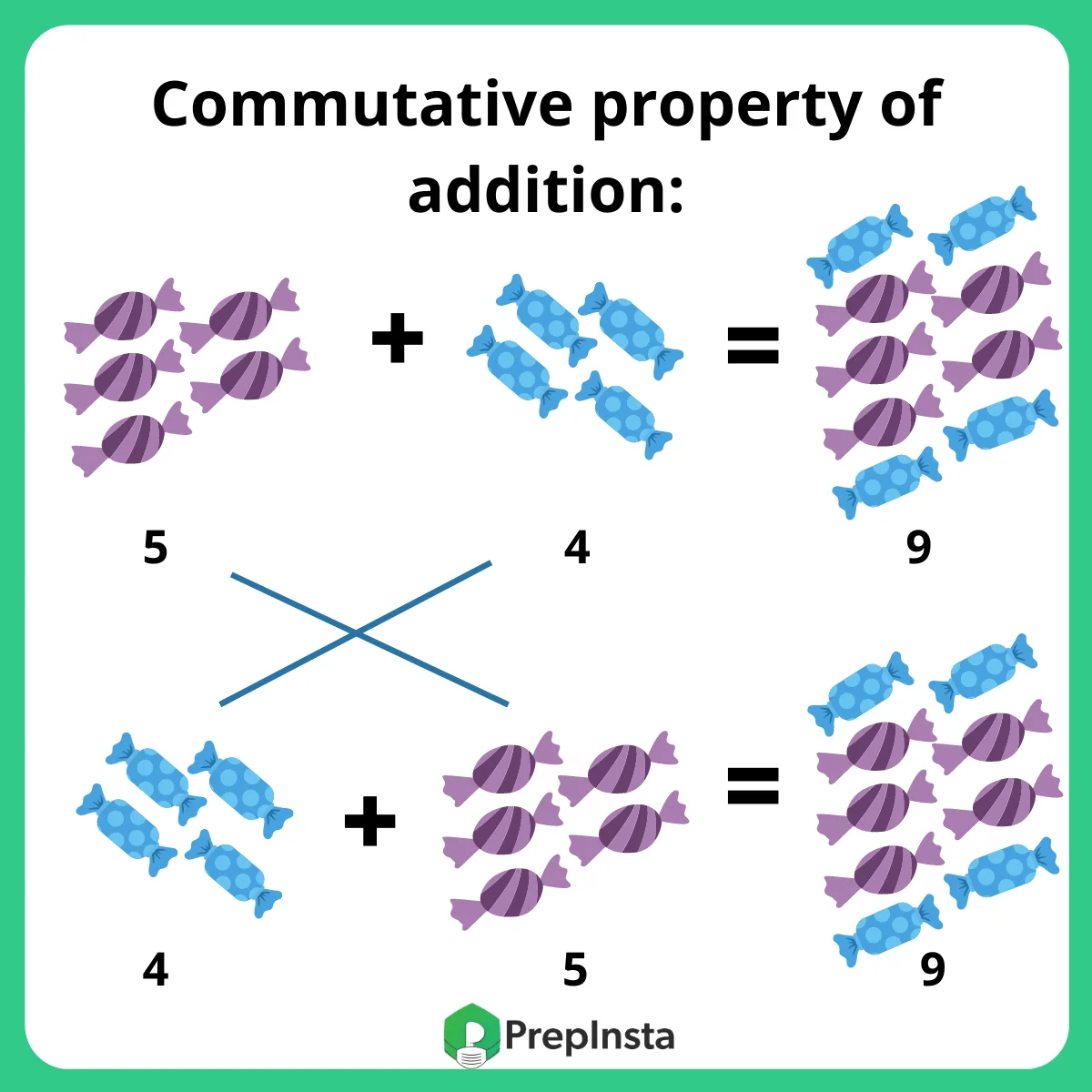
2. Commutative Property of Multiplication:
When the order of the factors are changed, the product does not change. These factors can be numbers or expressions.
a x b = b x a
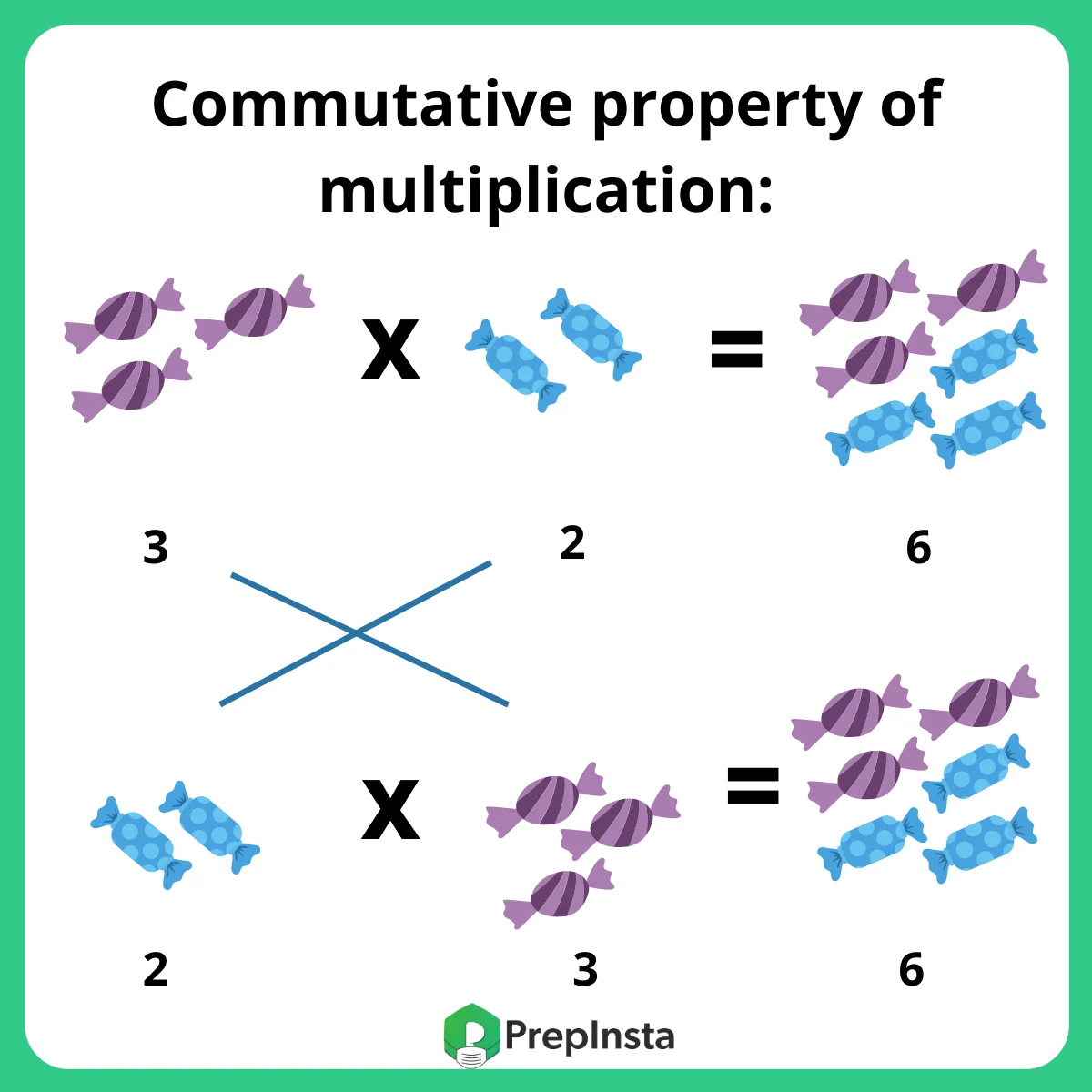
3. Associative Property of Addition:
The property defines that when two or more numbers are grouped together which are performing basic arithmetic addition, their order does not play a significant role in the result.
(a + b)+ c = a + (b + c)
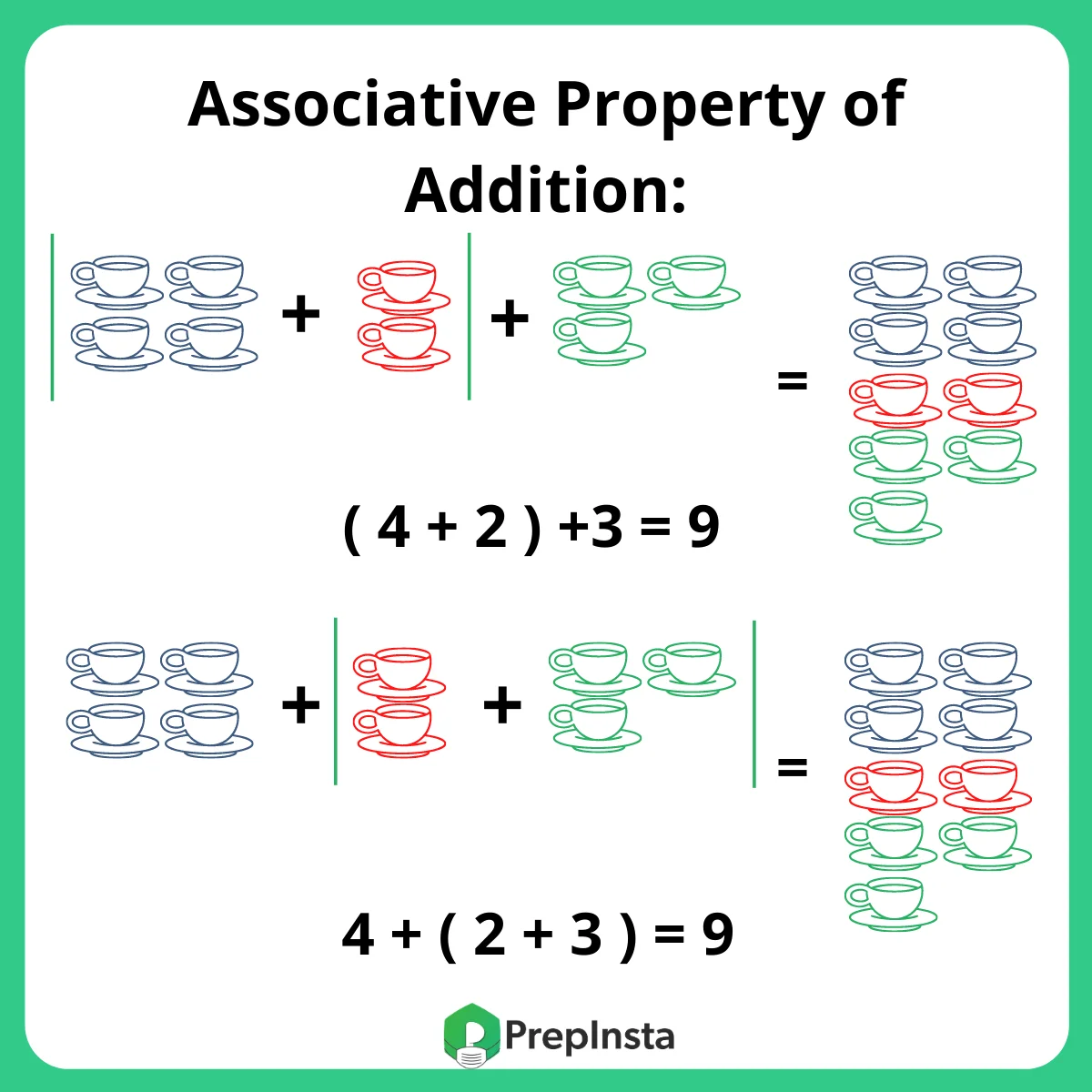
4. Associative property of Multiplication:
Associative property states that when two or more elements are grouped together in the basic arithmetical multiplication, their order does not change the final result. Also, in this case, the grouping is usually done by parenthesis.
(a x b) xc = a x (b x c)
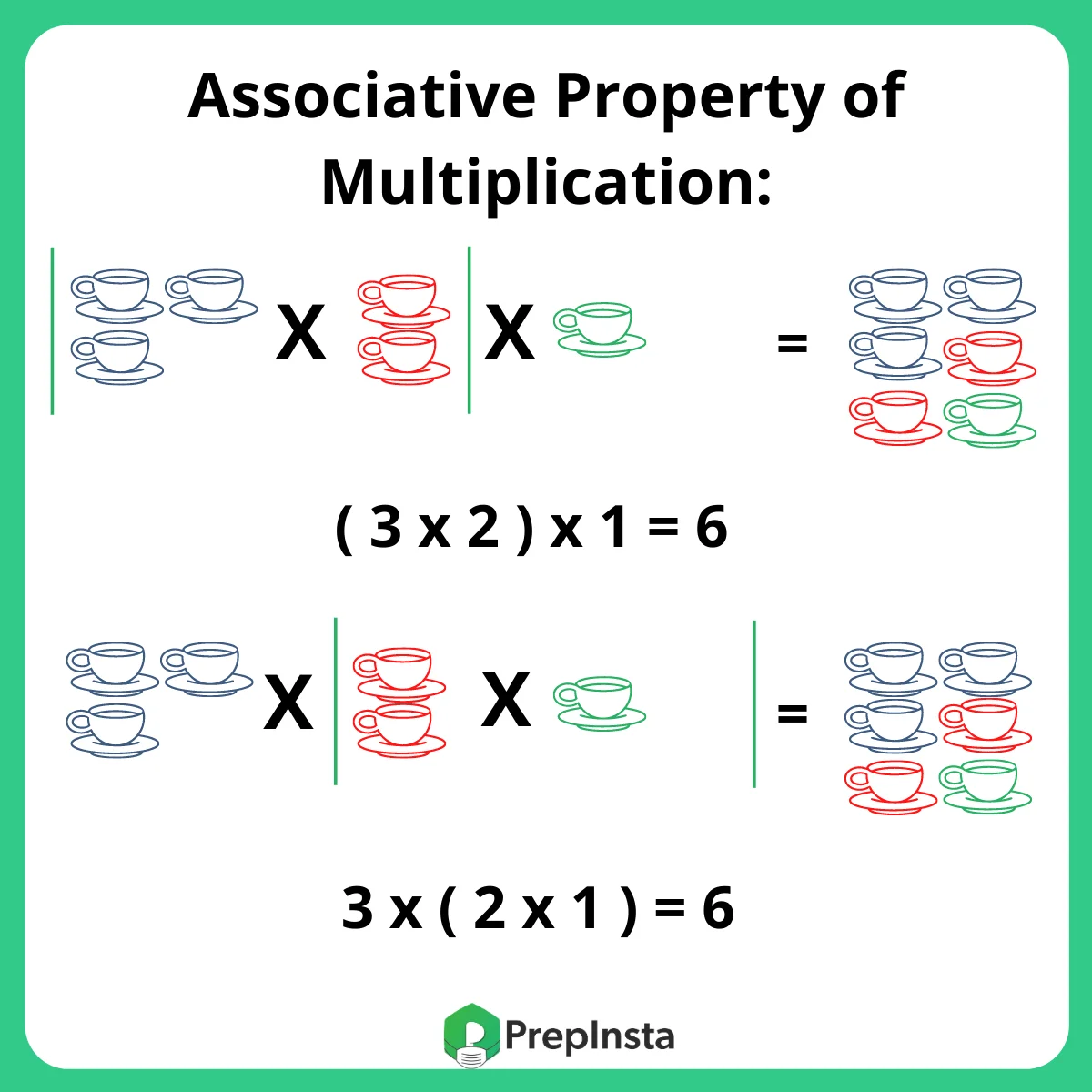
5. Distributive properties of Addition and Multiplication:
The distributive property says that the product of a single term and a sum or a difference of two or more terms present in the bracket is same as multiplying each of the element by a single term and them adding and subtracting the products.
a × (b + c) = a × b + a × c
and
(a + b) × c = a × c + b × c

6. Rule of multiplication over subtraction:
If p, q, and r are any numbers, then, p (q-r) = p*q – p*r. Similarly, in the addition rule, the distribution for multiplication over subtraction can be done in left distribution and right distribution.
If p* (q-r) = (p * q) – (p*r)- Left distributive law
and
If (p-q)*r = (p*r) – (q*r)- Right distributive law
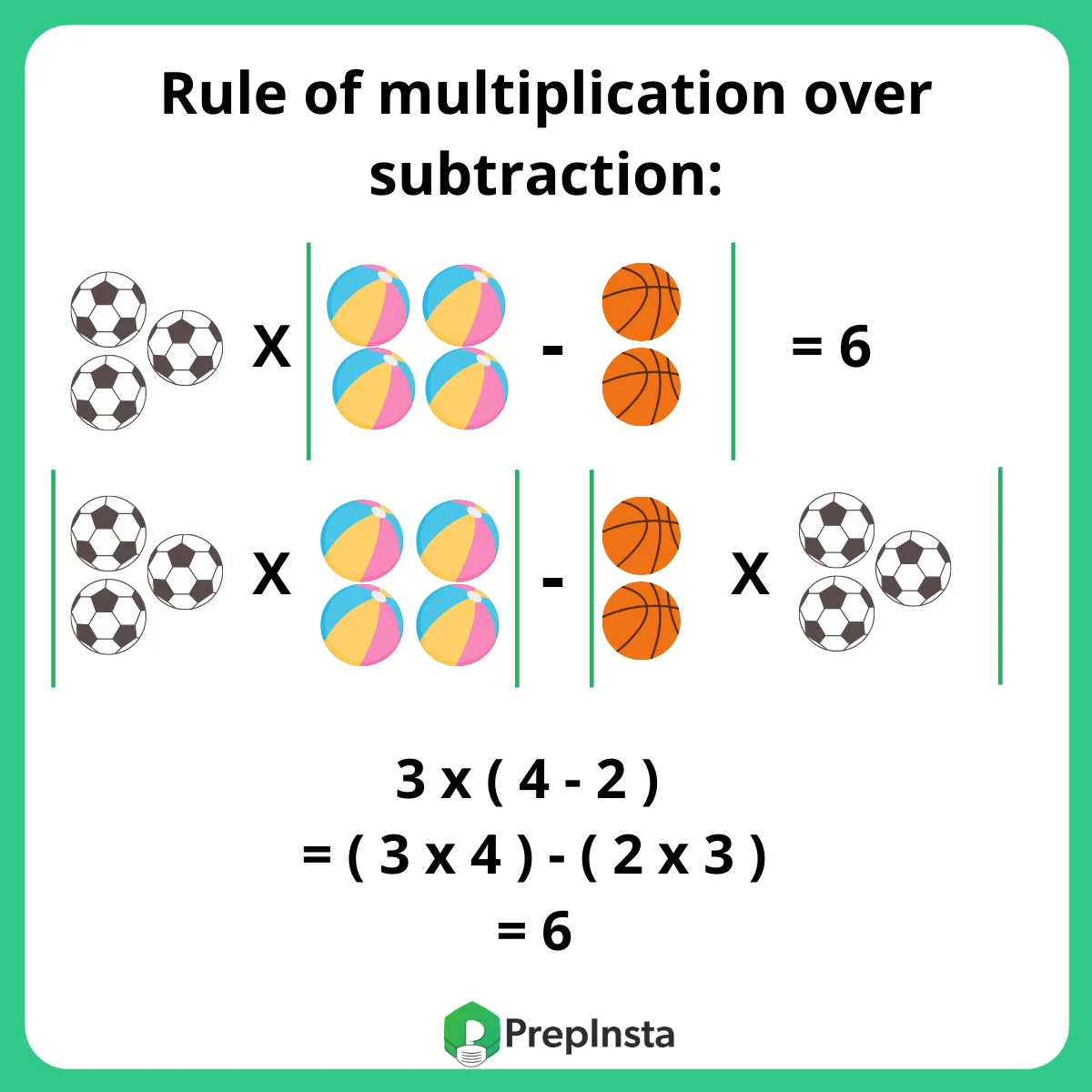
Algebra Questions and Answers
Question : Kobe Bryant wants to know that If a \times b = 2a – 3b + ab , then 3 \times 5 + 5\times 3 is equal to :
(1) 22
(2) 24
(3) 26
(4) 28
Solution : a \times* b = 2a – 3b + ab
=> 3\times 5 = 2 \times 3 – 3 \times 5 + 3 \times 5 = 6
5 \times 3 = 2 \times 5 – 3 \times 3 + 3 \times 5
= 10 – 9 + 15 = 16
Therefore, 3 \times 5 + 5 \times 3
= 6 + 16 = 22
Question : Kareena Kapoor wants to know that if p \times q = p + q +\frac{p}{q} , then the value of 8 \times 2 is :
(1) 6
(2) 10
(3) 14
(4) 16
Solution : p \times q= p +q + \frac{p}{q}
\therefore 8 \times 2 = 8 + 2 + \frac{8}{2}
=10 + 4 = 14
Question : Varun Dhawan wants to know that if two numbers x and y (x > y) are such that their sum is equal to three times their difference. Then value of \frac{3xy}{2(x^{2} -y^{2}) } will be:
(1) 2/ 3
(2) 1
(3) 1 1 /2
(4) 1 2 /3
Solution : (x + y) = 3 (x – y) = 3x – 3y
=> 3y + y = 3x – x
=> 2x = 4y
=> x = 2y
=> \frac{x}{y} = \frac{2}{1}
\therefore x = 2, y = 1
\frac{3xy}{2(x^{2} -y^{2}) }
= \frac{3*2*1}{2x *(4-1) }
= \frac{6}{6} =1
Question : Siddharth Malhotra wants to know the value of expression: (1 + \frac{1}{x})(1 + \frac{1}{(x+1)})(1 + \frac{1}{(x+2)})(1 + \frac{1}{(x+3)})
(1) (1 + 1/(x+4))
(2) x+4
(3) 1/ x
(4) x + 4/x
Solution : (1 + \frac{1}{x})(1 + \frac{1}{(x+1)})(1 + \frac{1}{(x+2)})(1 + \frac{1}{(x+3)})
= x+\frac{1}{x}* x+\frac{2}{x+1} * x+\frac{3}{x+2} * x+\frac{4}{x+3}
= x+\frac{4}{x}
Question : Ranveer Singh wants to know that If a * b = 2 (a + b), then 5 * 2 is equal to :
(1) 3
(2) 10
(3) 14
(4) 20
Solution : a * b = 2 (a + b)
\therefore 5 * 2 = 2 (5 + 2)
= 2 *7 = 14
Prime Course Trailer
Related Banners
Get PrepInsta Prime & get Access to all 200+ courses offered by PrepInsta in One Subscription
Also Check Out
Get over 200+ course One Subscription
Courses like AI/ML, Cloud Computing, Ethical Hacking, C, C++, Java, Python, DSA (All Languages), Competitive Coding (All Languages), TCS, Infosys, Wipro, Amazon, DBMS, SQL and others
- Linear Equations – Questions | Formulas | How to Solve Quickly | Tricks & Shortcuts
- Quadratic Equations – Questions | Formulas | How to Solve Quickly | Tricks & Shortcuts
- Linear Equations –
Questions |
Formulas |
How to Solve Quickly |
Tricks & Shortcuts - Quadratic Equations –
Questions |
Formulas |
How to Solve Quickly |
Tricks & Shortcuts

 0
0



Login/Signup to comment